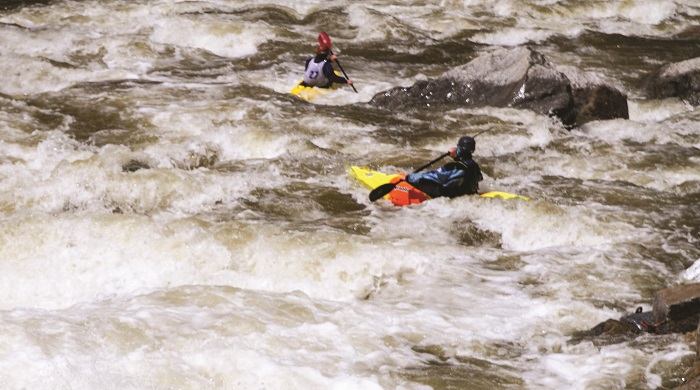The International Whitewater Rating System
The Whitewater Classification System, also known as the International Scale of River Difficulty, can be a confusing hierarchy to understand. Further complicating the issue is the frequent misuse by the different groups of kayakers, canoeists, and rafters that all call on the system to describe the rivers and rapids they paddle. This article presents a way to understand the different classifications,
how to put them into practice, and some of the difficulties that one will face in attempting to classify a river.
The Whitewater Classification System (in basic terms):
- Class I: (Easy) Moving water with small disturbances on the surface and a few small waves. There is little to no danger to swimmers.
- Class II: (Novice/Beginner) Faster moving water with easily avoided rocks, holes, and waves. Danger to swimmers is still slight but care must be taken.
- Class III: (Intermediate) Fast-moving water containing various rocks, holes, currents, and waves that require skillful maneuvering to avoid. Swimmers could be at risk and may require help.
- Class IV: (Advanced) Strong rapids, large waves, big holes, unpredictable currents, and dangerous obstructions requiring multiple maneuvers to get through or around. Swimmers are at risk and will require help to be rescued.
- Class V:(Expert) All of the characteristics of Class IV with the added danger of being longer and containing more continuous features that may not be avoided. There is a serious risk to swimmers and others may be of no help.
- Class VI: (Unrunnable) Only a team of experts who carefully plan every aspect of this expedition would have hope of surviving these rivers and rapids.
Classifying a River Put into Practice
People will often classify a river using one of the above rankings. This, however, is only one part of the story. Each river is made up of many different rapids and features. These various components are also classified using the above system. So, you can easily have a river that is considered a Class III river overall containing a Class IV rapid on it.
Furthermore, a river cannot be generalized by this system for all water levels. For instance, the New River Gorge is considered a Class III river at low water levels. At middle water levels, it is considered a Class IV River. Finally, at flood stage levels The New is considered a Class V river.
It becomes evident when one asks the question of what classification a specific river is that the answer will vary depending on the particular set of circumstances surrounding both the questioner and the river.
So, with the various different factors that go into classifying a river, it can be confusing to figure out how difficult a river actually is. This can be frustrating considering that the way a river is classified often determines whether or not a boater will paddle the river. For this reason, it is very important to thoroughly research any river you intend to paddle so that you can be sure your ability is adequately sufficient to safely paddle the river.

